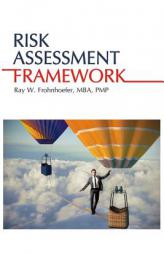
Details
Rent Risk Assessment Framework
Author:
Format:
Publisher: Ppc Group, LLC
Published: Dec 1969
Genre: Business & Economics - Project Management
Pages: 32
Synopsis
This guide provides a complete framework that can be used to establish a robust and repeatable risk management methodology at any stage of a project (preferably starting during planning). The accompanying workbook provides forms, tools, and templates to support the framework. It is up to the Project Manager to review, select, and tailor the framework to be appropriate to the project circumstances while also maintaining an appropriate level of control. Risk and opportunity management should be seamlessly integrated with Project Management and not treated as a separate undertaking or something to invoke in the time of a crisis. Risk management needs to be a proactive undertaking. Risk management should be utilized on all projects to communicate awareness of risk and opportunity situations to all stakeholders (e.g. project sponsor, team members, management, customers, partners, and contractors). It is also an ongoing process that needs to be subjected to periodic review and revision. Risk and opportunity management does not need to be associated with high overhead. Most small to medium enterprises and up to moderately complex projects can complete a Risk Assessment Workshop (RAW) in under a day. The entire process of an initial risk assessment can generally be completed in a week or less of effort. Saving the results from project-to-project can also reduce time if you have similar projects that share similar risks. The framework is applicable to all phases of the project life cycle – from project charter to final closeout and implementation within an enterprise. While applicable in the broader sense, the focus is on the planning phase. Although it does not specifically focus on managing those risks which may be the responsibility of a customer, partner, or subcontractor to manage via their own discrete risk management mechanisms, there is no reason why these procedures cannot address the control of ALL elements of risk and opportunities associated with any given project.
